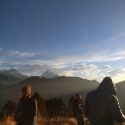Nepal is a country of amazing beauty and cultural diversity, nestled between the towering Himalayan peaks and the lush jungles of the Indian plains. This small country, which is sometimes referred to as a trekker’s paradise, has much more to offer than just the ice summits of its well-known mountains. The vivid festivals, ornate temples, and kind smiles of the Nepalese populace are what give the country its heart. Nepal is a blend of the ancient and the modern, where traditions and rituals still play a crucial role in the daily lives of its inhabitants. This is evident in everything from the busy ancient streets of Kathmandu to the peace of the numerous Buddhist monasteries and Hindu temples.
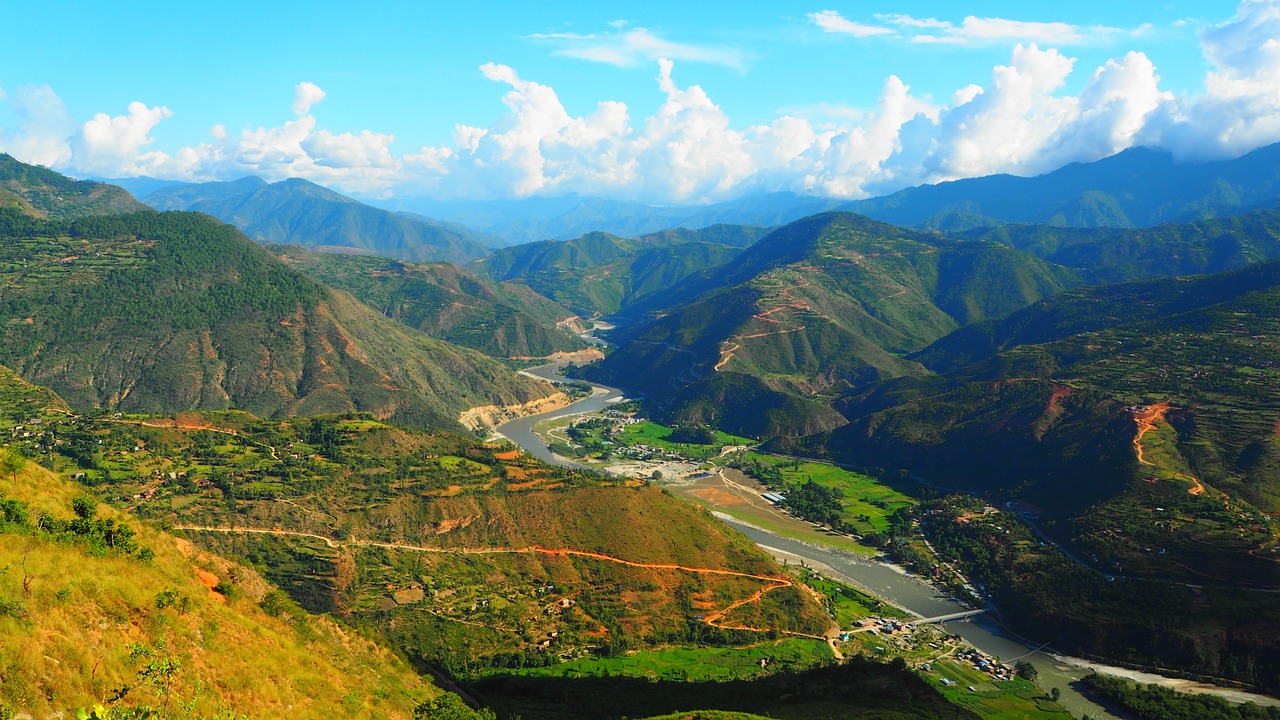
Nepal presents a timeless tapestry of varied landscapes and cultures to the discerning traveler. One can start their tour in the hilly region’s terraced farms and charming villages, then travel to Mustang’s high-altitude deserts or the beautiful Everest and Annapurna base camps. If the mountains are not calling to you, you can still see gorgeous tigers and rhinos in their natural homes in the Terai lowlands’ lush woods. Whatever your interests—adrenaline junkies, seekers of the spiritual, or fans of culture—Nepal guarantees a singular and unforgettable experience for everybody.
Here are the top locations in this Himalayan splendor that you just cannot skip if you’re planning a vacation there:
Kathmandu Valley
The Kathmandu Valley is a stunning fusion of old buildings, bustling bazaars, and energetic festivals. It is sometimes referred to as the cultural and historical center of Nepal. Incense-scented air and the resonant toll of temple bells draw you toward the centuries-old pagodas and shrines as you meander through its winding lanes. The busy capital city of Kathmandu is just one part of the valley; there are also the nearby towns of Bhaktapur and Patan, each of which is proud of its own distinct history and allure. The rich cultural and architectural traditions of Nepal are preserved in these cities, which were formerly independent kingdoms in their own right.
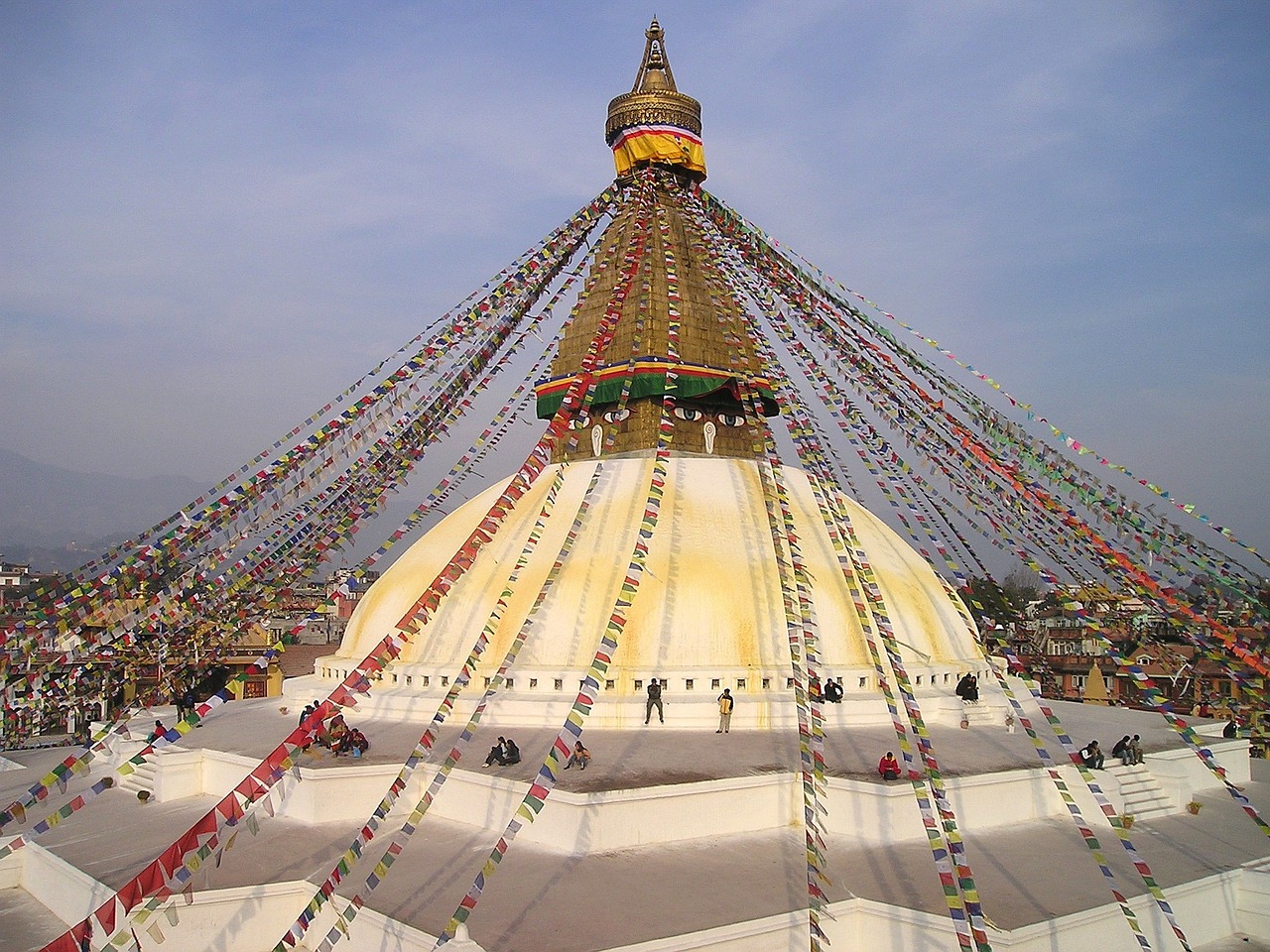
With its immaculately preserved palaces, courtyards, and temples, Bhaktapur, also known as the “City of Devotees,” transports tourists to a bygone age. The 55-Window Palace and the Vatsala Temple are two prominent sites in the Bhaktapur Durbar Square, which serves as a living memorial to the city’s illustrious past. Patan, also known as Lalitpur or the “City of Beauty,” is renowned for its abundance of beautiful arts and crafts and is only a short drive from Kathmandu. The Patan Durbar Square is a kaleidoscope of elaborate woodwork, beautifully carved temples, and historical landmarks and is a UNESCO World Heritage Site. Both cities provide an unmatched window into the eternal traditions and craftsmanship of the Newar people thanks to their winding cobblestone streets and ancient customs.
Pokhara
Pokhara, which is tucked away in the foothills of the magnificent Annapurna range, provides a tranquil contrast to the bustle of Kathmandu. This lovely hamlet, which is frequently referred to as the “Gateway to the Himalayas,” is a haven for both explorers and peace-seekers. Phewa Lake is a popular place for boating and lakeside strolls because of the reflection of snow-capped peaks on the calm waters of the lake. While the far heights of Machapuchare (Fishtail Mountain) keep a solemn vigil, the lake comes to life as dusk falls with colorful boats and the silhouettes of the surrounding hills. The town itself is a lovely mashup of cute cafes, bustling neighborhood markets, and Tibetan artisan booths, all set against a background of soaring mountains.
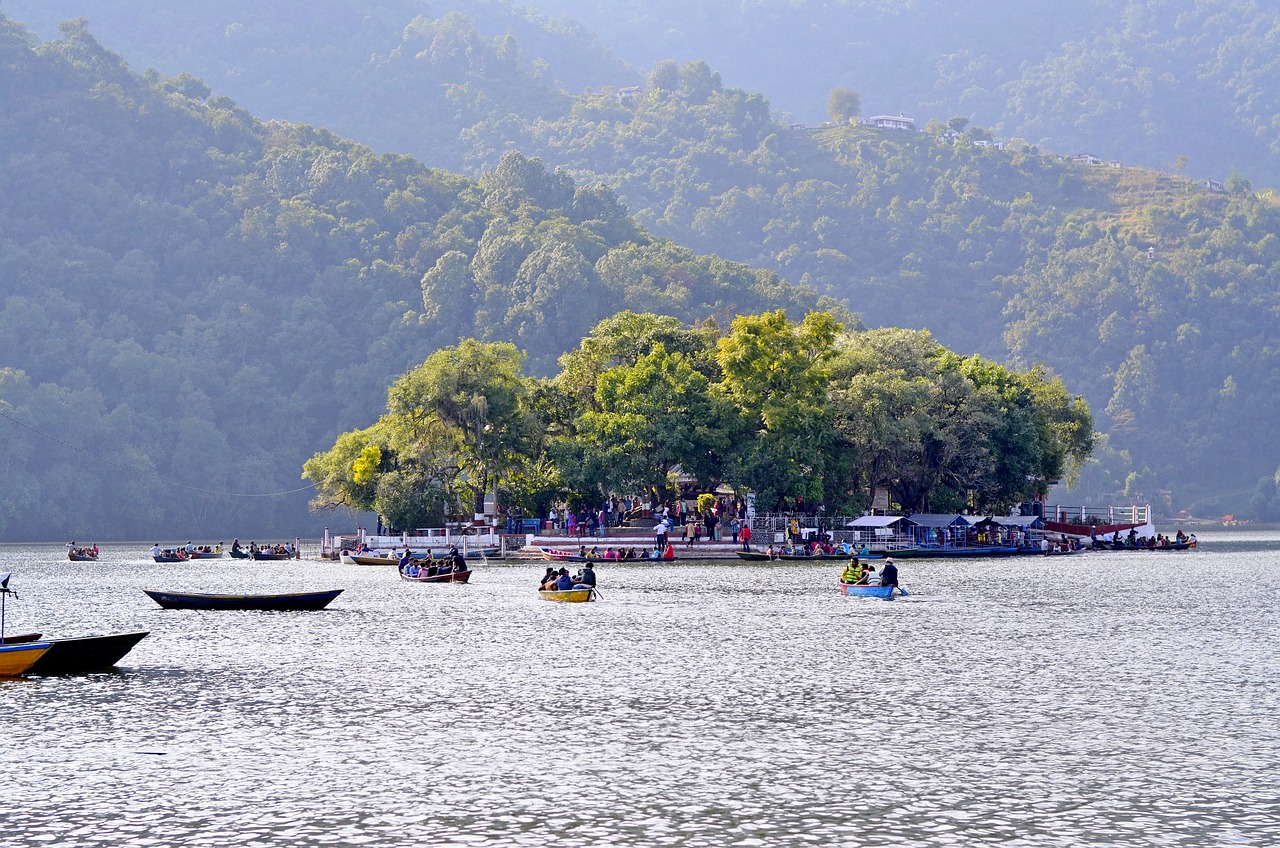
Beyond its natural charm, Pokhara is a popular destination for adventure seekers. It serves as the beginning of a number of hikes in the Annapurna area, including the well-known Annapurna Circuit. The town provides paragliding excursions for people looking for an adrenaline thrill, where fliers soar far above terraced fields, medieval towns, and the turquoise expanse of Phewa Lake. The World Peace Pagoda, which provides panoramic views of the entire Pokhara Valley, and the Gurkha Museum, which highlights the courage of Nepal’s renowned Gurkha soldiers, are just two of the city’s numerous cultural attractions. Pokhara offers a reviving escape from the stress of the outside world, whether you choose to explore its cultural richness in depth or simply relax by the lake.
Trekking Routes
Numerous paths wind across Nepal’s varied landscapes, which range from terraced farmlands and lush rhododendron forests to alpine meadows and glacier moraines. The country is frequently referred to as the “Trekking Capital of the World.” These trails offer not only unrivaled views of the highest mountains in the world but also a thorough immersion in the nation’s rich cultural heritage. Adventurers are drawn to the Everest Base Camp Trek, which is arguably the most famous of them all because it offers the chance to get up close and personal with the tallest peak in the world. But this is only the very beginning. The Annapurna Base Camp Trek, which encompasses the varied nature and culture of the area, leads trekkers through an ever-changing vista of mountains, villages, and forests. The Langtang Valley Trek, which is frequently overshadowed by its more well-known competitors.

Most people focus on the well-known treks, but Nepal is full of lesser-known paths that provide equally engaging experiences. The Manaslu Circuit, which circles the eighth-highest mountain in the world, travels through uninhabited villages and wilderness, offering a sense of seclusion frequently lacking from more traveled routes. The Upper Mustang Trek, on the other hand, takes hikers to a stark, high-altitude desert terrain that is infused with old Buddhist culture and reminds one of the Tibetan plateaus. Then there is the Kanchenjunga Base Camp Trek, which travels through a region that is a biodiversity hotspot to the base of the third-highest peak in the world. Trekking in Nepal is an experience that appeals to the soul, senses, and body since each route, whether well-known or still largely unexplored, has its own unique tale to tell.
Recommended Read: Trekking in Nepal: A Spiritual Journey
Chitwan National Park
Chitwan National Park, which is located in the lush Terai plains, is evidence of Nepal’s dedication to biodiversity and wildlife conservation. This 932 square kilometer UNESCO World Heritage Site is a mix of grasslands, woods, and marshy wetlands that serves as a haven for a wide variety of animals and plants. The one-horned rhinoceros, a mammal that once teetered on extinction but now roams freely in the park’s expanses, is one of Chitwan’s most recognized conservation successes. The park also harbors spectacular animals including Bengal tigers, Asian elephants, leopards, and the gharial crocodile in addition to the rhino.
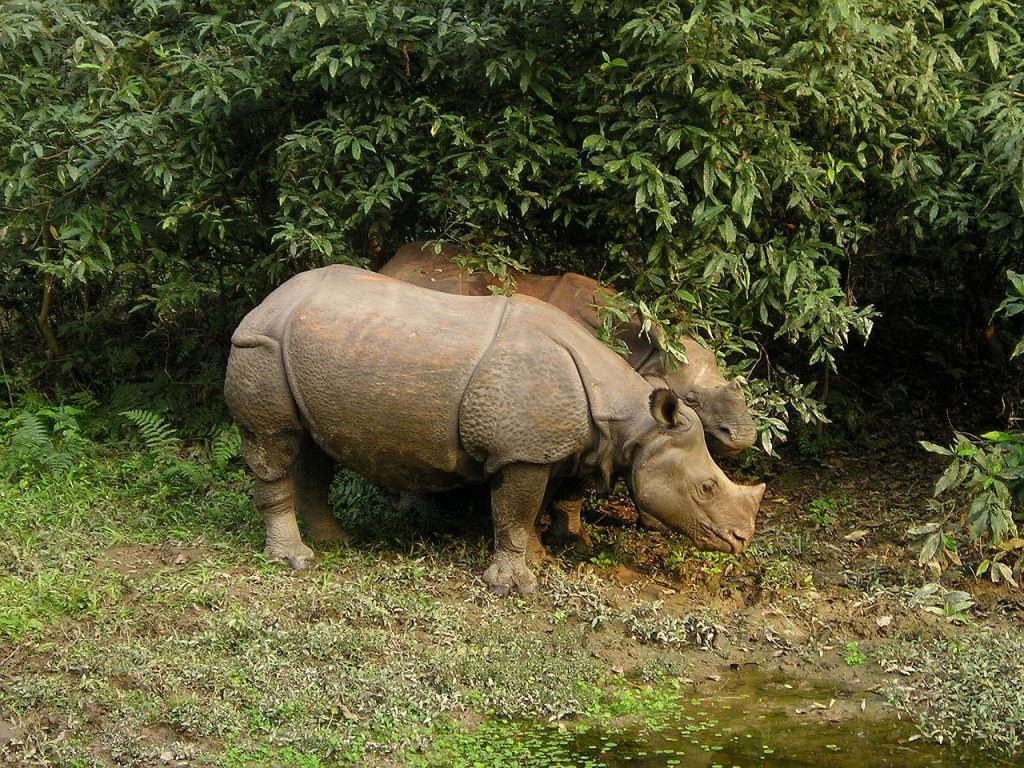
Chitwan offers so much more than just animal sightings, even if vehicle and elephant-back safaris are the most popular activities for giving tourists an up-close interaction with the park’s wildlife. Canoe journeys down the Rapti and Narayani rivers offer peaceful moments in the midst of nature, frequently with views of crocodiles and aquatic fowl. The indigenous Tharu tribe in the Chitwan area gives the park experience a cultural twist. Visitors can learn about their distinctive way of life, traditions, and close ties to the forest through their traditional dance performances, village tours, and encounters. As a result, a trip to Chitwan National Park is transformed into a complete tour that seamlessly combines animal activities with memorable cultural encounters.
Lumbini
Lumbini, a peaceful Nepalese town located in the Rupandehi District, has a significant historical and spiritual significance. Lumbini, which is cherished by Buddhists from all over the world, is known as the birthplace of Siddhartha Gautama, who eventually became the Buddha. The area is distinguished by the eponymous Ashoka Pillar, a stone pillar with inscriptions built by Emperor Ashoka in the third century BC to mark the location of the Buddha’s birth. It serves as a reminder of the place where one of the world’s great faiths has its roots. Lumbini’s significance is further enhanced by the neighboring sacred pond, where Queen Mayadevi is thought to have bathed before giving birth to Siddhartha, and the Maya Devi Temple, which honors the precise location of the Buddha’s birth.
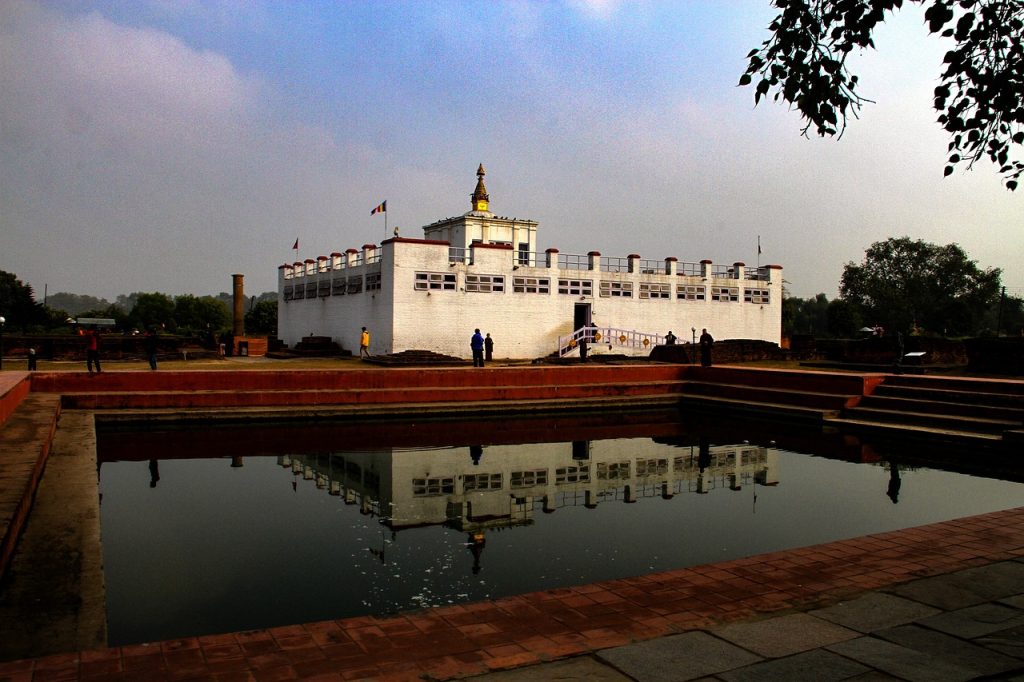
Lumbini is now regarded as a representation of world peace and unity. Numerous monasteries and stupas constructed by various nations, each showing their distinct architectural styles and interpretations of Buddhist precepts, can be seen across the vast Lumbini Development Zone, which includes a monastic zone. A stroll through Lumbini is comparable to a voyage through various Buddhist cultures from throughout the world, from the exquisite Thai temple to the magnificence of the Myanmar Golden Temple. The park is also home to the Eternal Peace Flame, a representation of universal peace, and the Lumbini Museum, which provides information on the Buddha’s life and teachings. Lumbini is not only a pilgrimage site, but also a retreat for everyone seeking peace and tranquillity due to its tranquility, extensive history, and diverse culture.
Bandipur
Bandipur is a lovely town that skillfully combines Nepal’s traditional heritage with the grandeur of its natural landscapes. It is perched on a ridge high above the Marsyangdi River Valley. With its ancient temples, shrines, and traditional homes along the cobblestone streets, Bandipur, which was once a bustling halt on the trade route between India and Tibet, is now a beautifully preserved village that displays the splendor of Newari architecture. The town’s lofty location offers visitors a calm getaway from the bustle of city life and offers panoramic views of the Himalayan range, including notable peaks like Dhaulagiri, Machapuchare, and Manaslu.
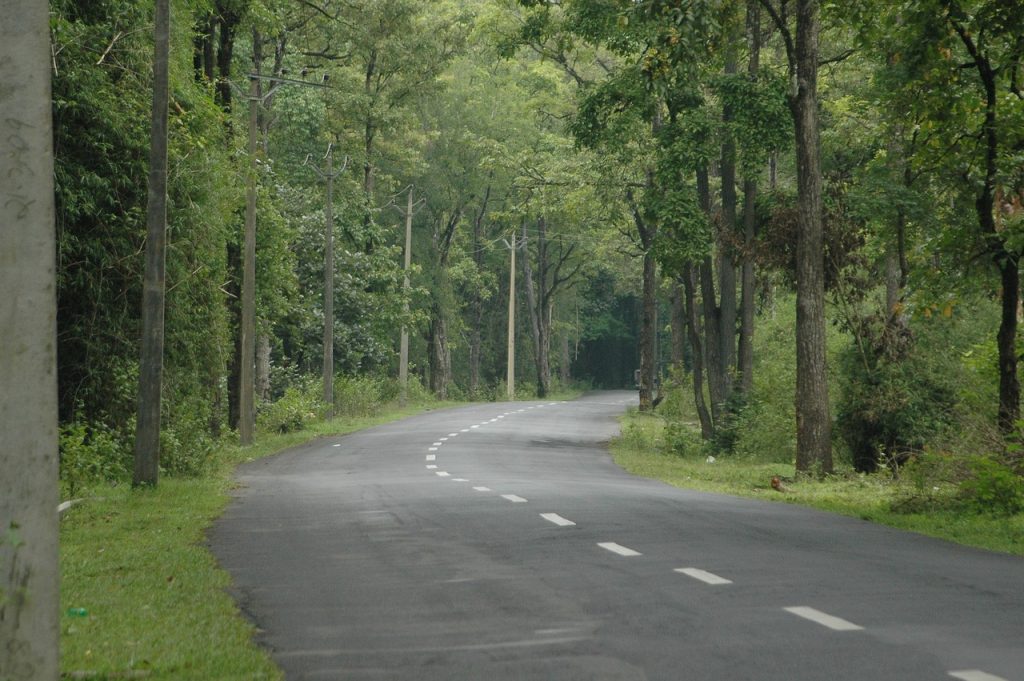
Bandipur is known for its main bazaar street, which is pedestrian-only and lined with traditional Newari structures, but there is much more to this hilltop village than meets the eye. There are numerous hiking paths in the area that lead to places like the Thani Mai Temple, which has some of the best sunrise views in all of Nepal. Adventurers are drawn to the Siddha Gufa, the biggest limestone cave in Asia, by its expansive chambers and unique formations. In addition, the hill’s open space, known as the Tundikhel, offers a fantastic vantage point from which to see the distant peaks and the expansive terraced fields below. For anyone seeking to experience a wonderful fusion of natural beauty, historical riches, and real cultural expression, Bandipur is a must-visit.
Rara Lake
Rara Lake is an incredible refuge of peace and natural beauty hidden in Nepal’s far-flung northern region. Due to its unrivaled beauty, it is frequently referred to as the “Queen of Lakes” despite being the largest lake in the nation. The lake’s glistening blue waters are set against a magnificent backdrop of snow-capped peaks and dense pine forests, which is surrounded by Rara National Park. At a height of about 2,990 meters, the lake’s lovely setting offers a picturesque vista in sharp contrast to the dry landscapes that are typically associated with this area. A photographer’s paradise, the lake’s varying moods and colors, which range from a deep blue to an entrancing turquoise depending on the time of day and season.
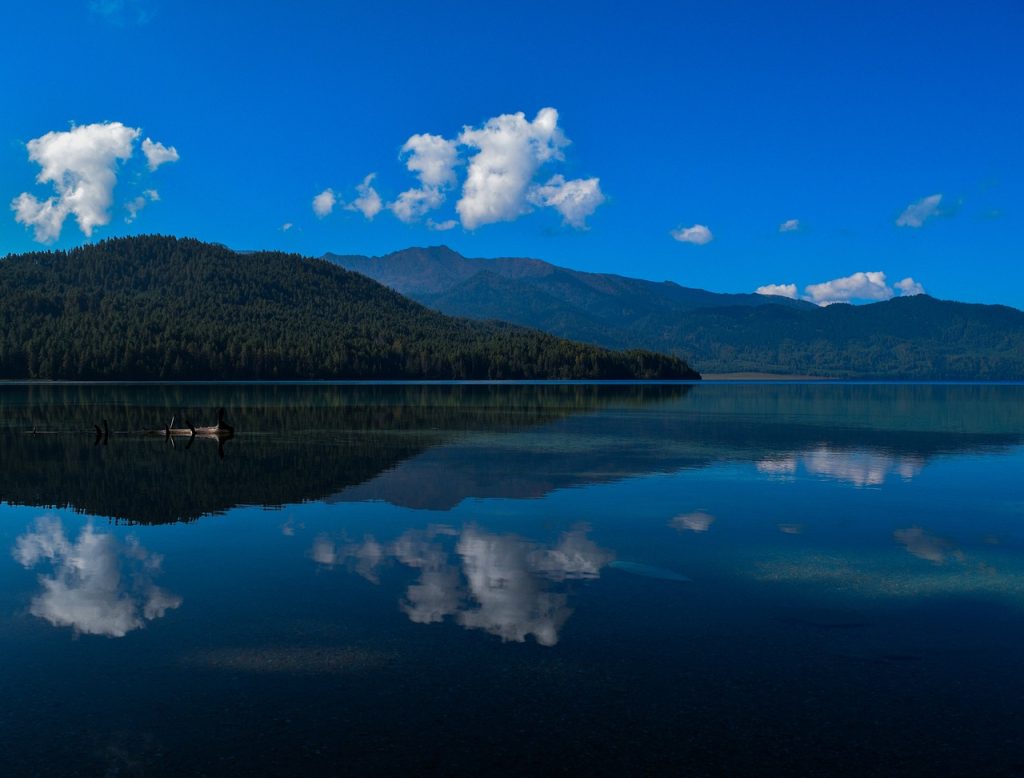
Rara is a gateway to a world alive with biodiversity, not just a beautiful lake. The lake is surrounded by Rara National Park, which is home to a wide variety of plants and animals, including the elusive musk deer, Himalayan black bear, and red panda. It is a sanctuary for birdwatchers because of the abundance of birds in the area, including the Himalayan monal and the snow cock. In addition to offering breathtaking vistas, trekking around the lake offers the ability to fully experience the local culture of the area, with its tiny hamlets and indigenous people. Although traveling through difficult terrain and off-the-beaten-path pathways is necessary to reach Rara Lake, the quiet atmosphere and ethereal beauty that await make the effort worthwhile.
Ilam
Ilam, which is located in Nepal’s eastern mountainous region, is sometimes compared to Darjeeling because of its extensive tea estates, mild weather, and stunning scenery. The emerald-hued plantations, which sprawl far and wide and cover the area in all shades of green, are renowned for their production of traditional tea. These terraced fields offer a magnificent scene that is peaceful and energizing, frequently shrouded in a light morning mist. Beyond its tea, Ilam is a place that attracts both nature lovers and those looking for a tranquil escape due to its rolling hills, lush forests, and mosaic of flora and wildlife.
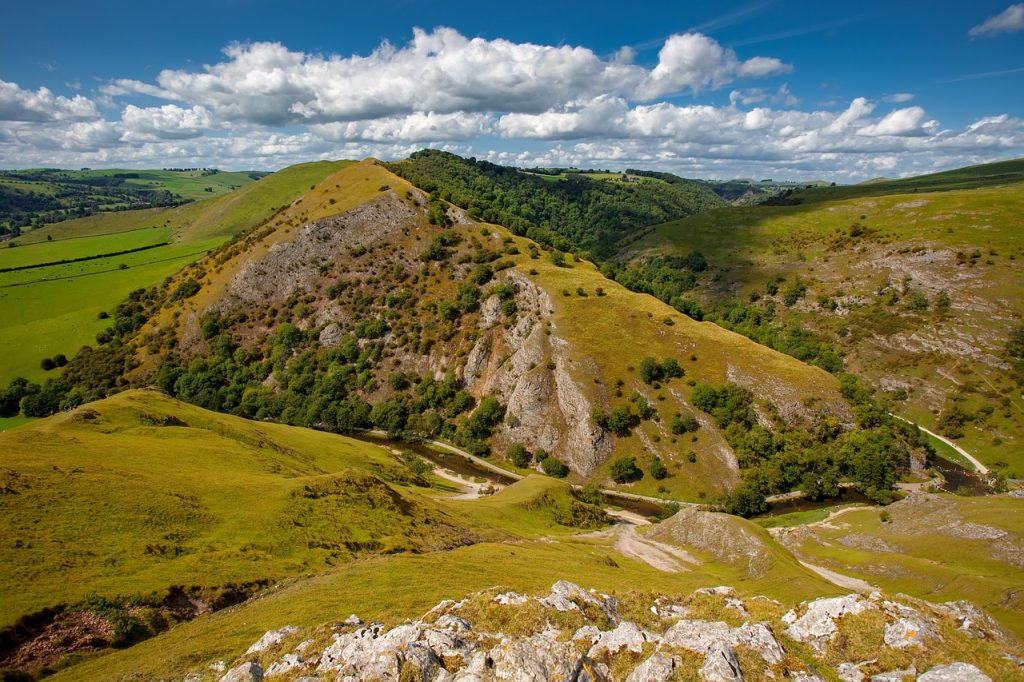
There is much more to Ilam than just its fragrant brews, even though the tea gardens are clearly the biggest appeal. An important wetland and pilgrimage site, Mai Pokhari is home to a variety of orchid species, birds, and even an endangered salamander. It is a clean lake surrounded by beautiful trees. In addition to their tea gardens, Kanyam and Fikkal are well-known destinations because of their expansive vistas and lively local marketplaces. Treks up to the Sandakpur peak provide breathtaking vistas of the Eastern Himalayas, including the magnificent Kanchenjunga, for those with a taste for adventure. Ilam provides a refreshing and educational experience, whether you choose to explore the region’s rich biodiversity or sip on a freshly made cup of tea while gazing out at the plantations.
Gosaikunda
Gosaikunda, a freshwater lake in the mountains of Langtang National Park, is more than just a place for Hindus and Buddhists to find spiritual fulfillment. This glacier lake is surrounded by high Himalayan peaks and huge stretches of untamed nature at an elevation of roughly 4,380 meters. The lake, with its glistening blue waters, is highly revered by Hindus, who think that Lord Shiva created it when he pushed his trishul (trident) into a mountain to draw water to soothe his burning throat after ingesting poison. Thousands of pilgrims make the hard journey to Gosaikunda every year during the Janai Purnima festival in the hopes that a holy dip in its frigid waters will absolve them of their sins.
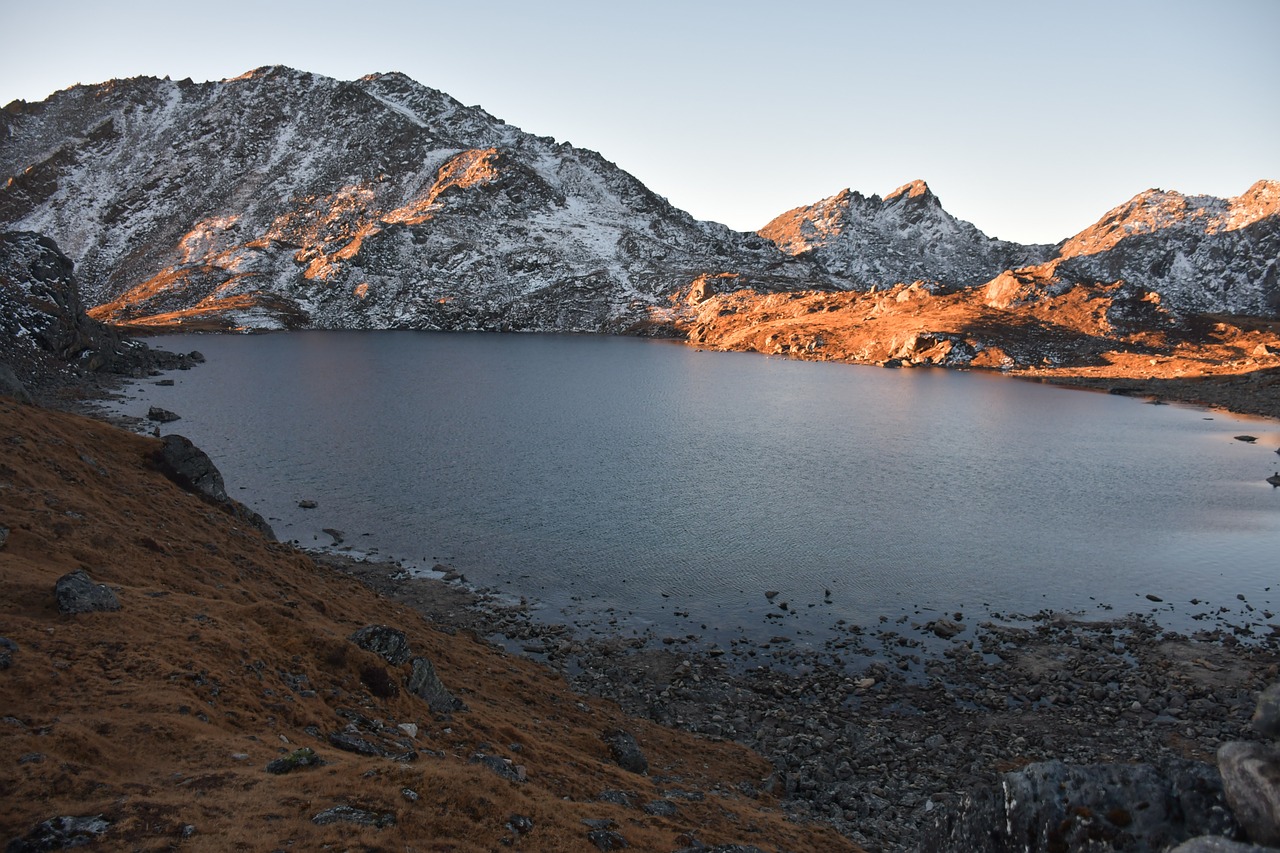
While challenging, the walk to Gosaikunda takes you through some of Nepal’s most beautiful scenery. The unadulterated splendor of the Himalayas unfolds before hikers as they ascend through lush rhododendron woods, across high slopes, and past gushing waterfalls. The pathway, which is peppered with cute teahouses and prayer flags, frequently echoes with the chants of pilgrims and the distant tolls of yaks traveling the rough trails. The spiritual aura and ethereal beauty of the lake, which are accentuated by the reflections of the mountains in its surroundings on the calm waters, give one a profound sense of tranquility and accomplishment. Gosaikunda is a place that strikes the soul, regardless of whether a traveler is looking for adventure, spiritual peace, or simply the charm of unspoiled nature.
Tansen Palpa
Tansen, the dynamic and cultural center of the Palpa District, is perched on the southern slope of the Mahabharat Range. This old town skillfully combines its rich legacy with surrounding natural beauty. It is recognized for its temperate temperature and breathtaking views of the Himalayas. Tansen’s appeal can be found in its winding, cobblestone lanes, historic temples, traditional Newari buildings, and the vibrant handicrafts on show in nearby markets. Tansen, which served as the historical capital of the Magar kingdom and later as the home of the Rana kings, has a rich cultural diversity that is reflected in its festivals, music, and everyday activities. The Palpa Durbar, the town’s most recognizable monument and a fusion of Mughal and British architectural elements, serves as a tribute to its illustrious past.
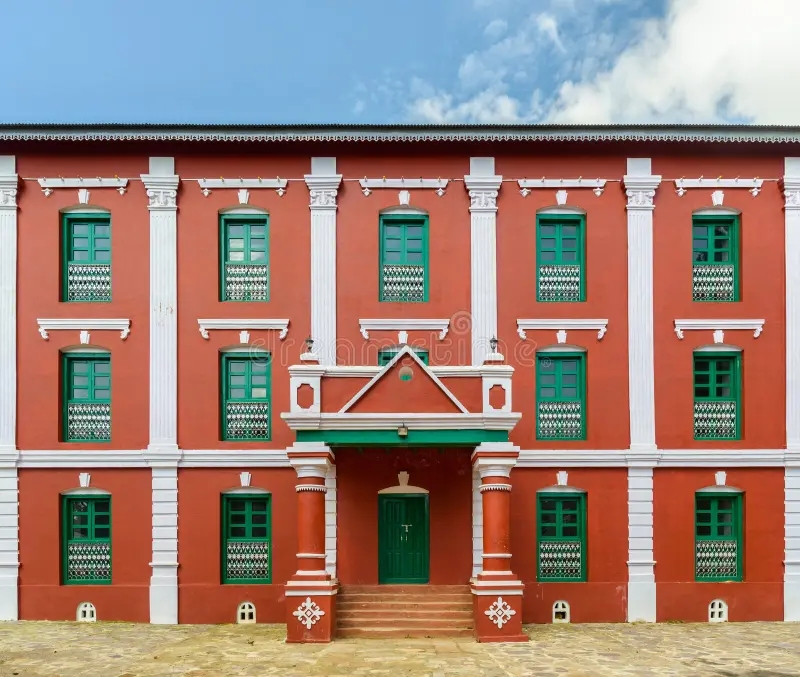
Tansen is a vibrant, culturally rich town, yet its natural beauty and tranquil surroundings also draw tourists. Rani Mahal, a magnificent palace situated on the banks of the Kali Gandaki River and frequently referred to as the “Taj Mahal of Nepal,” lies close by and provides breathtaking views of the valley below. The calm waters of the Sitalpati Pond, which are encircled by temples, offer a soothing haven for visitors seeking peace. Tansen also acts as a starting point for a variety of walking trails that delve deeply into the unspoiled beauty of the area, taking hikers past terraced agriculture, thick forests, and conventional Magar communities. Tansen, Palpa guarantees a singular and fascinating experience for everyone, whether it be for its rich history, architectural wonders, or the charm of nature.
Nepal, known as the “Roof of the World,” has much more to offer than merely imposing mountains and exhilarating experiences. This country is a tapestry of varied experiences waiting to be unraveled, from the sacred precincts of Lumbini and the architectural wonders of the Kathmandu Valley to the calm beauty of lakes like Rara and Gosaikunda and the cultural diversity of cities like Tansen. Every location in Nepal has a unique narrative to tell, rich in culture, history, and natural beauty. Whether you’re a history buff, a nature lover, a spiritual seeker, or an adventurous tourist, Nepal invites you to discover its many facets of beauty. One thing is certain as this tour of Nepal’s greatest attractions comes to an end: a single trip will just touch the surface merely scratch the surface of what this amazing nation has to offer. So gather your belongings, fasten your boots, and allow Nepal’s mysticism to fascinate you.
Tags: luxurytravel, mountains, nepal


